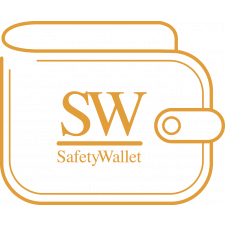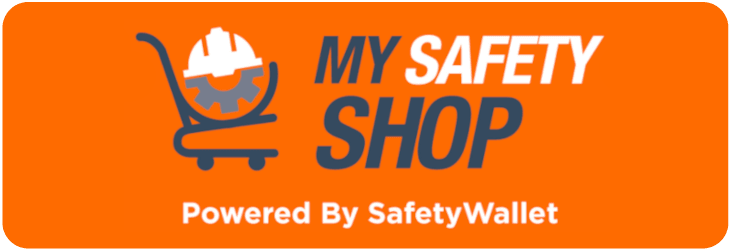Promulgating Change: The Future of Occupational Health and Safety in South Africa
In this article, we discuss the Promulgation of the Occupational Health and Safety Amendment Bill and look at the impact it will have on employers. Mr Ockert Fourie (on behalf of My Safety Hub) had the privilege of speaking with Mr Tobile Lamati, the Director General of The Department of Employment and Labour, who shared valuable insights into this crucial subject.
Occupational Health and Safety is of paramount importance in any country. South Africa, with its diverse industries and workforce, faces unique challenges in this domain. We sat down with Mr Lamati to gain insights into the current status and future prospects of Occupational Health and Safety in the country.
The Current State of Occupational Health and Safety
When asked about the current state, Mr Lamati emphasised that it is a mixed bag of good and bad. On the positive side, South Africa boasts strong professionals dedicated to Occupational Health and Safety. The Department of Employment and Labour has established supportive structures for their work. However, incidents and accidents are on the rise, which is evident from the increasing compensation payouts made by the Compensation Fund. Clearly, when measured by the frequency of incidents, the current state of Occupational Health and Safety is a cause for concern.
The Promulgation Process for the Amendment Bill
To gain insight into the promulgation process, we inquired about its expected completion. Mr Lamati stated that their goal is to have the Amendment Bill signed off by the President before the end of the financial year, specifically by the 31st of March 2024. This indicates their determination to expedite the process and ensure the necessary legal framework is in place.
Watch our interview with the Director General Mr Tobile Lamati
Challenges and Considerations
Regarding the challenges faced during the promulgation process, Mr Lamati shared that they received numerous comments when the bill was open for public review. The Advisory Council on Occupational Health and Safety is currently reviewing these comments. They anticipate completing this process by the end of July or August. Once the Bill is refined to incorporate the public's feedback, it will undergo consultation with all social partners before being presented to the cabinet and parliament for approval.
The Future of Occupational Health and Safety in South Africa
Looking ahead, Mr Lamati expressed optimism about the future. The commitment of Health and Safety activists and professionals, as evidenced by conferences and scientific advancements, indicates a strong desire for change. The dire social impact of workplace-related issues necessitates action. Furthermore, the COVID-19 pandemic highlighted the importance of safe working environments, resulting in fewer workplace fatalities from the virus compared to general fatalities across the country. The future of Occupational Health and Safety in South Africa looks promising, with a collective effort to ensure safe workplaces.
Mr Lamati stated that the current state of Occupational Health and Safety in South Africa is a mix of positives and challenges. While there are dedicated professionals and supportive structures, the increasing number of incidents raises concerns. The promulgation process for the Amendment Bill is underway, with the goal of completion before the end of the financial year. Despite the challenges, the future appears bright, with a strong focus on creating workplace safety and mitigating risks.
The Occupational Health and Safety Amendment Bill will have significant implications for employers
Sections 7 and 8 of the Occupational Health and Safety Amendment Bill will have significant implications for employers and the requirement to have a Health and Safety Management System. Let's discuss the impact of these sections in more detail:
Section 7: Health and Safety Management System
In this section, (1) the chief inspector is granted the authority to direct an employer or group of employers in writing to develop and implement a health and safety management system.
Any directive under subsection (1) shall be accompanied by guidelines concerning the contents of the health and safety management system concerned.
Section 8: General Duties of Employers to Their Employees
This section outlines the general duties of employers toward their employees in ensuring a safe and healthy working environment. It states as follows:
(1) Every employer shall provide and maintain, as far as is reasonably practicable, a working environment that is safe and without risk to the health of his or her employees.
(2) Without derogating from the generality of an employer’s duties under subsection (1), the matters to which those duties refer include in particular:
(a) conducting a workplace specific risk assessment and thereafter developing and implementing a risk management plan in writing, in respect of every risk identified;
(b) ensuring that the workplace specific risk assessment is conducted, by a person or persons who are competent to pronounce on all the risks associated with that workplace;
(c) ensuring that the workplace specific risk management plan is in place and is available at the workplace when requested by an inspector.
(d) Ensuring that no work is undertaken unless the control measures contained in the risk management plan are complied with;
(e) providing information, instructions, training and supervision as may be necessary to ensure, as far as is reasonably practicable, the health and safety at work of employees;
(f) ensuring that no employee is permitted to do any work or to produce, process, use, handle, store or transport any article or substance or to operate any plant or machinery, unless the precautionary measures contemplated in paragraphs (b) and (d), or any other precautionary measures which may be prescribed, have been taken;
(g) taking all necessary measures to ensure that the requirements of this Act are complied with by every employee in his or her employment or by any person on premises under his or her control where plant or machinery is used;
(h) enforcing such measures as may be necessary in the interest of health and safety;
(i) ensuring that work is performed and that plant or machinery is used under the general supervision of a person trained to understand the hazards associated with it and who have the authority to ensure that precautionary measures taken by the employer are implemented; and
(j) causing all employees to be informed regarding the scope of their authority; and
(k) ensuring communication of the relevant components of the risk management plan to every employee.
Furthermore, employers are obliged to conduct a workplace-specific risk assessment, develop and implement a written risk management plan based on the identified risks, and ensure that the plan is available at the workplace upon request by an inspector.
These sections place a significant responsibility on employers to prioritise the health and safety of their employees. Employers must implement precautionary measures, provide training and supervision, and ensure compliance with the new Legislation. By doing so, employers can create a safe working environment that reduces risks and promotes the well-being of their employees.
These sections of the Occupational Health and Safety Amendment Bill impose new obligations on employers in South Africa. They emphasise the need for a comprehensive Health and Safety Management System and outline general duties to maintain a safe workplace. Employers must prioritise employee well-being and take proactive measures to identify and mitigate risks. Compliance with these provisions is crucial for ensuring a healthy and safe working environment for all employees.
How can SafetyWallet assist you in becoming and staying compliant with the new Legislation?
At SafetyWallet, we understand that health and safety is often seen as a challenging aspect to implement into a business or organisation, particularly where there may be very little in place. It seems a lot of work is required for very little value in return. The opposite is actually true and this is why we offer our SafetyWallet subscribers our Policies, Procedures, and Practices system or, as we call it for short, the PPPs.
The PPPs (Policy, Procedure, and Practice documents) are a comprehensive system designed to simplify health and safety management. Each PPP focuses on addressing specific aspects of health and safety in the workplace. The policy sets the intent of the organisation, the procedure explains how to implement the policy, and the practice provides detailed guidelines for implementation. The PPPs are interconnected and form a documented health and safety management system that can be easily managed and maintained. By implementing the PPPs, organisations not only comply with new health and safety legislation but also utilise best practices.
What sets the PPPs apart is the incorporation of important concepts such as Behaviour-Based Safety (BBS), Mindset Safety, and Health and Safety Change Management. BBS focuses on identifying and addressing at-risk behaviors, while Mindset Safety aims to create a safety-conscious culture within the organisation. Change management ensures that safety changes are implemented successfully.
SafetyWallet subscribers have access to over 100 PPPs, with new ones being added regularly. These PPPs cover the fundamentals of occupational health and safety management and can be tailored to specific operations.
The benefits of using the PPPs include having a complete health and safety management system tailored to the organisation, demonstrating commitment to health and safety, cultivating a positive health and safety culture, standardisation of processes, flexibility to adjust the PPPs as needed, improved health and safety outcomes, time and cost savings, compliance with Legislation, and enhanced organisational reputation.
By subscribing to SafetyWallet and implementing the PPPs, organisations can effectively manage their health and safety requirements, create a safer working environment and comply with all new Legislation.
Click on the image below to find a SafetyWallet Solution that suits your business (Branch/Site specific) and get the benefits along with the subscription:
SafetyWallet is an essential tool for businesses looking to achieve and maintain health and safety compliance. With its user-friendly tools and access to the latest safety legislation and best practices, SafetyWallet can help subscribers reduce the risks of workplace accidents and injuries, protect employees and visitors from harm, and ensure business continuity.
 MAKROSAFE / SAFETYWALLET / MY SAFETY SHOP are in Partnership.
MAKROSAFE / SAFETYWALLET / MY SAFETY SHOP are in Partnership.


Comments (1)
Awesome blog and very informative...
2023-07-03 16:00:40